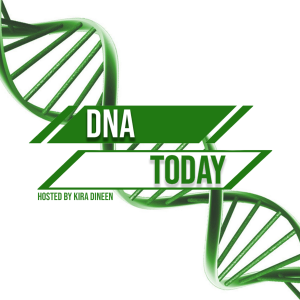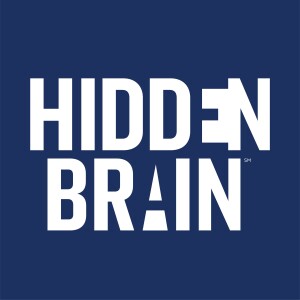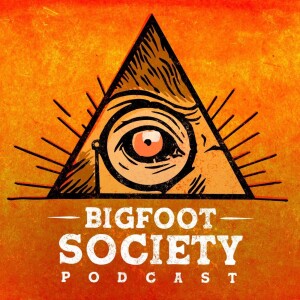

Did you know that 80% of children with biliary atresia who undergo a Kasai procedure will still require liver transplant at some point in their life? Dr. Bade, a pediatric gastroenterologist, joins medical students Tucker Oliver and Sarah Chappell to discuss evaluation and management of infants with biliary atresia. Specifically, they will:
- Discuss the presentation and diagnosis of biliary atresia
- Explain pathophysiology behind jaundice
- Discuss preoperative and postoperative recommendations for the Kasai procedure
- Review complications and outcomes of the Kasai procedure
- Share advice for navigating the diagnosis of biliary atresia with families
Special thanks to Dr. Rebecca Yang and Dr. Jennifer Tucker for peer reviewing this episode.
FREE CME Credit (requires free sign-up): https://mcg.cloud-cme.com/course/courseoverview?P=0&EID=19513
References:
1] P. J. Lupo et al., “Population-based birth defects data in the United States, 2010-2014: A focus on gastrointestinal defects.,” Birth Defects Res, vol. 109, no. 18, pp. 1504–1514, Nov. 2017, doi: 10.1002/bdr2.1145.
[2] J. L. Hartley, M. Davenport, and D. A. Kelly, “Biliary atresia,” The Lancet, vol. 374, no. 9702, pp. 1704–1713, Nov. 2009, doi: 10.1016/S0140-6736(09)60946-6.
[3] S. S. Sundaram, C. L. Mack, A. G. Feldman, and R. J. Sokol, “Biliary atresia: Indications and timing of liver transplantation and optimization of pretransplant care.,” Liver Transpl, vol. 23, no. 1, pp. 96–109, Jan. 2017, doi: 10.1002/lt.24640.
[4] D. Volpert, F. White, M. J. Finegold, J. Molleston, M. DeBaun, and D. H. Perlmutter, “Outcome of Early Hepatic Portoenterostomy for Biliary Atresia,” J Pediatr Gastroenterol Nutr, vol. 32, no. 3, pp. 265–269, Mar. 2001, doi: 10.1097/00005176-200103000-00006.
[5] R. Fawaz et al., “Guideline for the Evaluation of Cholestatic Jaundice in Infants: Joint Recommendations of the North American Society for Pediatric Gastroenterology, Hepatology, and Nutrition and the European Society for Pediatric Gastroenterology, Hepatology, and Nutrition.,” J Pediatr Gastroenterol Nutr, vol. 64, no. 1, pp. 154–168, Jan. 2017, doi: 10.1097/MPG.0000000000001334.
[6] P. H. Y. Chung et al., “Life long follow up and management strategies of patients living with native livers after Kasai portoenterostomy.,” Sci Rep, vol. 11, no. 1, p. 11207, May 2021, doi: 10.1038/s41598-021-90860-w.
[7] E. H. Gad, Y. Kamel, T. A.-H. Salem, M. A.-H. Ali, and A. N. Sallam, “Short- and long-term outcomes after Kasai operation for type III biliary atresia: Twenty years of experience in a single tertiary Egyptian center-A retrospective cohort study.,” Ann Med Surg (Lond), vol. 62, pp. 302–314, Feb. 2021, doi: 10.1016/j.amsu.2021.01.052.
[8] A. M. Calinescu et al., “Cholangitis Definition and Treatment after Kasai Hepatoportoenterostomy for Biliary Atresia: A Delphi Process and International Expert Panel.,” J Clin Med, vol. 11, no. 3, Jan. 2022, doi: 10.3390/jcm11030494.
[9] S. Kiriyama et al., “Tokyo Guidelines 2018: diagnostic criteria and severity grading of acute cholangitis (with videos),” J Hepatobiliary Pancreat Sci, vol. 25, no. 1, pp. 17–30, Jan. 2018, doi: 10.1002/jhbp.512.
[10] K. Decharun, C. M. Leys, K. W. West, and S. M. E. Finnell, “Prophylactic Antibiotics for Prevention of Cholangitis in Patients With Biliary Atresia Status Post-Kasai Portoenterostomy,” Clin Pediatr (Phila), vol. 55, no. 1, pp. 66–72, Jan. 2016, doi: 10.1177/0009922815594760.
[11] E. Jung, W.-H. Park, and S.-O. Choi, “Late complications and current status of long-term survivals over 10 years after Kasai portoenterostomy.,” J Korean Surg Soc, vol. 81, no. 4, pp. 271–5, Oct. 2011, doi: 10.4174/jkss.2011.81.4.271.
[12] S. S. Sundaram et al., “Health related quality of life in patients with biliary atresia surviving with their native liver.,” J Pediatr, vol. 163, no. 4, pp. 1052–7.e2, Oct. 2013, doi: 10.1016/j.jpeds.2013.04.037.
[13] B. L. Shneider et al., “Efficacy of fat-soluble vitamin supplementation in infants with biliary atresia.,” Pediatrics, vol. 130, no. 3, pp. e607-14, Sep. 2012, doi: 10.1542/peds.2011-1423.
[14] J. P. Molleston and B. L. Shneider, “Preventing variceal bleeding in infants and children: is less more?,” Gastroenterology, vol. 145, no. 4, pp. 719–22, Oct. 2013, doi: 10.1053/j.gastro.2013.08.026.
[15] G. Grisotti and R. A. Cowles, “Complications in pediatric hepatobiliary surgery,” Semin Pediatr Surg, vol. 25, no. 6, pp. 388–394, Dec. 2016, doi: 10.1053/j.sempedsurg.2016.10.004.
[16] F. R. Sinatra, “Consultation with the Specialist: Liver Transplantation for Biliary Atresia,” Pediatr Rev, vol. 22, no. 5, pp. 166–168, May 2001, doi: 10.1542/pir.22-5-166.
[17] I. Sriram and D. Nicklas, “Biliary Atresia,” Pediatr Rev, vol. 43, no. 11, pp. 659–661, Nov. 2022, doi: 10.1542/pir.2021-005287.
[18] L. H. Rodijk et al., “Parental wellbeing after diagnosing a child with biliary atresia: A prospective cohort study.,” J Pediatr Surg, vol. 57, no. 4, pp. 649–654, Apr. 2022, doi: 10.1016/j.jpedsurg.2021.05.026.
[19] A. Sanchez-Valle, N. Kassira, V. C. Varela, S. C. Radu, C. Paidas, and R. S. Kirby, “Biliary Atresia: Epidemiology, Genetics, Clinical Update, and Public Health Perspective.,” Adv Pediatr, vol. 64, no. 1, pp. 285–305, Aug. 2017, doi: 10.1016/j.yapd.2017.03.012.
More Episodes
All Episodes>>Creat Yourt Podcast In Minutes
- Full-featured podcast site
- Unlimited storage and bandwidth
- Comprehensive podcast stats
- Distribute to Apple Podcasts, Spotify, and more
- Make money with your podcast












